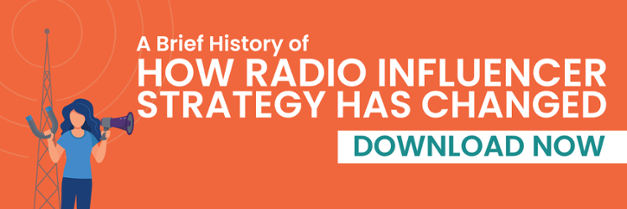
You've spent a significant amount of time and resources on this particular radio ad. Finally, the big day comes! It goes on-air, and you wait for the results... and wait... and wait and wait.
Eventually, it becomes clear that your radio ad didn't achieve the desired results. There is no increase in call volume to your business, no boost to your floor traffic, no spike in online search volume, or web traffic, no feedback, and no bump in sales.
Understandably, you're very disappointed and frustrated!
What went wrong? Why didn’t your ad work?
There are a number of potential problems that could derail a radio ad's effectiveness and lead to a big letdown. The good news is, all of these problems are fixable, given sufficient knowledge, and the right tools. Below are three basic problems that radio advertisers have to deal with, and how you can address them.
Targeting Problems
There may be nothing wrong with your ad itself. However, it won't do any good if it doesn't reach the right audience. If your radio ad didn't work, one of the first areas to look at is targeting.
For instance, is it possible that you chose to air your ad on the wrong station, one that doesn't really cater to your target demographic?
Is it possible that your target customer hasn't yet been clearly defined by your marketing team?
Have all relevant factors been taken into account: age, gender, race, nationality, and lifestyle psychographics? And do you need to geo-target them, or look at desired trade areas?
Are there qualitative considerations in play such as household income or homeownership?
Perhaps your ad didn't work because it advertised a brick and mortar store that was outside the local community's "comfort zone" in terms of travel distance. Alternatively, it may be the wrong time of day to advertise; if you are targeting the 9-to-5 office worker demographic, then a radio spot at 7:30 pm may not reach your target consumers.
What's the fix? The bottom line is that you have to diligently study your target audience to determine which stations they listen to, and when they do so. Once you have that essential information, you'll be able to make the right decisions on how best to deliver your messaging.
Creative Problems
On the other hand, maybe your ad didn't work because it was poorly developed. There are a ton of creative pitfalls that any radio advertiser may unwittingly fall into, such as:
- Trying to attract consumers with false or exaggerated promises
- Mocking competitors and/or their products
- Using clichés
- Pushing a set of values onto the listener
- Taking on a self-congratulatory tone
- Listing product features without context
- Talking down to listeners
- Unnecessarily repeating the substance of the message
- Telling irrelevant stories
- Being melodramatic
Does the copy resonate with the listener? Is it credible and believable? Did your ad include a strong call to action? How do you want the listeners to respond?
Additionally, did you use a radio influencer’s endorsement or just a regular ad?
What's the fix? The solution to creative problems is editing. Be willing to go back over your ad creative with a fine-tooth comb, and make any necessary edits to your copy. For example:
- Develop a "hook" that grabs your listener's attention
- Use humor when appropriate
- Use language that is understandable and relatable to your target audience
- Leverage values and messaging that will resonate with your consumers
- Provide testimonials
- Focus on the benefits of your product's features
- Be conversational
- Be consistent
- Tell a relevant story that will engage your audience
- Use an appropriate amount of emotion to connect with your listeners
Measurement Problems
Finally, there's a third possibility: you targeted the right audience, your ad was effective, but you don't have a reliable way to measure its performance. In that case, you need to ask yourself questions such as:
- Does our on-air schedule have sufficient reach and frequency? (In other words, are we running enough commercials?)
- Is the campaign scheduled to last long enough so it will become recognizable and gain traction?
- Are your expectations for success reasonable or unrealistic?
- Do you have a baseline for performance in place and a specific methodology to gauge the campaign's success or lack thereof?
What's the fix? Apart from setting reasonable expectations and giving your ad enough time and exposure to start generating results, you need to develop a strategy to calculate your Return on Ad Spend (ROAS). This may involve three basic steps:
- Create a baseline model of what your marketing efforts would look like without radio ads, and then project the impact that your radio ads generate
- Use special attribution tools to determine which results are driven by your radio advertising
- Separate the impact of radio from other advertising channels
Overcoming Problems and Optimizing Your Radio Ads
If you address the problems discussed above, your radio campaigns will likely generate measurable results over time — and you'll no doubt see a high ROI from your efforts.
You'll target the right people and deliver your ads to them at the right time with sufficient frequency. You'll avoid creative pitfalls and craft engaging copy that truly resonates with your audience. You'll even be able to accurately measure the impact your ads generated.
At that point, you'll be able to wave your frustration good-bye and reap the benefits of a successful radio advertising strategy.




